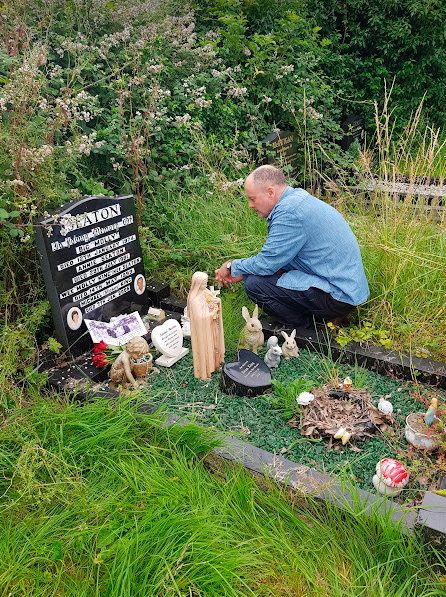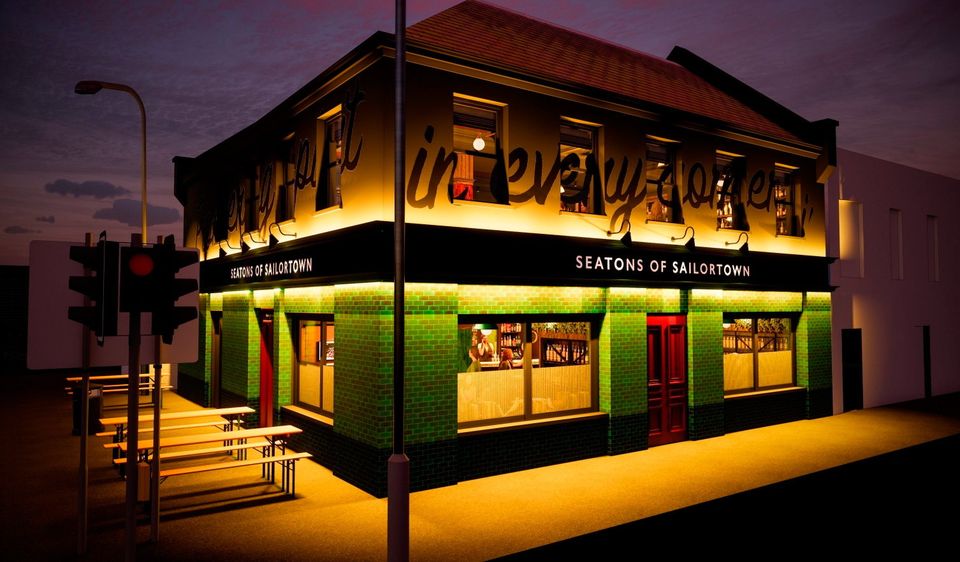Molly Seaton — possibly one of Belfast’s most underrated stars — has been described by a women’s soccer expert as Northern Ireland’s greatest female footballer of a generation — and is finally getting the recognition she deserves through a new pub in her homeplace.
Molly was born in 1905, in the docks area of Belfast, and now the former McKenna’s bar in that area is being refurbished and rebranded as Seatons of Sailortown.
The new business, currently in development, is being created by publican Kelvin Collins, who is also behind Ben Madigan’s Bar & Kitchen on the Cavehill Road in north Belfast.
Molly lived along the Shore Road on Dandy Street, and was properly discovered for her fantastic footballing abilities in 1927.
Scottish sides Rutherglen and Edinburgh came to the island of Ireland then, to find players that would mix with Edinburgh, to create a national Irish team, that would play against the Scottish team, mixed up of other Edinburgh players alongside the Rutherglen ones.
The Scottish teams provided their own opposition by travelling and playing as one large squad or two loosely affiliated squads, in order to overcome the bias against women’s football.
Ropeworks 3 v 3 York Street Linen Mill (Molly Seaton is the tall woman third from left in top row)
On May 21 that year, Molly also participated in the first organised women’s football match held in the Irish Free State.
Steve Bolton is a renowned women’s football historian. He developed his passion for the topic after researching his own grandmother, Lizzy Ashcroft, who played for the famous Dick Kerr Ladies — one of the earliest known women’s association football teams in England, and the most successful women’s football teams of all time.
During a family visit a few years ago to Claudy, where his wife Maria is from, Preston-born Steve visited Windsor Park to see where his granny played against the tough-tackling 5′10″ Molly.
Steve Bolton paying a visit to Molly Seaton’s grave
He also left a picture of the Dick Kerr Ladies FC side as a touching tribute on Molly’s grave in Greencastle, where she was laid to rest in 1974.
“Molly Seaton is the Belfast equivalent to Lily Parr,” he told The Belfast Telegraph, with Lily Parr being the trailblazer in the women’s game in the inter-war years, and the star of the Dick Kerr Ladies team.
“In July 1931, in a game between the Dick Kerr Ladies and an Irish selection of players, Molly Seaton was the star player,” he added.
“According to a newspaper article at the time, Ireland lost 2-3 very narrowly to the Dick Kerr Ladies — and that was with my granny, Lily Parr and Jenny Harris — it was a really superstar team, and she almost took them on on her own, in front of 4,500 spectators.
“Ireland teams of the 1930s were more specifically Northern Ireland selections, often exclusively from the Belfast region. “
A newspaper article from the Northern Whig at the time describes Molly during that match:
‘Nominally she was playing centre-half, but she took the corners, scored the goals, cleared dangerous rushes in the full-back position and led the forward line’.
The three English players who marked her ‘tried to sandwich her, to bamboozle her with three-cornered passing, to kick the ball over her head, to charge her, and to dribble past her, but she got the ball almost every time’.
Away from the pitch, Molly has been described as a larger-than-life woman, who enjoyed a smoke and a pint of Guinness.
Molly Seaton (far right) leads a team out
It’s thought she never married, and she worked as a doffing mistress at Whitehouse faux spinning mill and Upper Corgery Road spinning mill, while also frequenting Morrison’s Bar and Edinburgh Castle Bar in her later years.
Molly was described in one article in the Isle of Man Examiner as having played in ladies soccer matches between ‘Northern Ireland and the Free State’ and the Dick Kerr Ladies. The article goes on to state: “From the very kick-off — and all through the game — Miss Seaton was the one player whose performance commanded attention. Her knowledge of the practical points of the game was astonishing, and there are many players in the Isle of Man who probably wish they had her stamina and ability.”
Steve also noted that he has been in touch with Kelvin Collins about the new Seatons of Sailortown establishment, and he’s gong to provide them with some more newspaper articles and memorabilia relating to Molly.
What the new Seatons of Sailortown could look like when completed
“I can’t wait for my next visit and I can’t wait to see the new bar,” he said.
From 1933 the number of women’s football matches staged in the Belfast region fell markedly, probably due to renewed sectarian unrest in Northern Ireland, Steve explained.
Molly’s last big match came on August 10, 1936, when French team Femina Sport, returned to Belfast to take on Ireland.
“There were a couple of matches after that, but it really started to fizzle out and so did the coverage as well. Then, there was the WWII. But, Molly appears after that occasionally refereeing games and becoming a talent scout as well.
“She really liked her football.”



